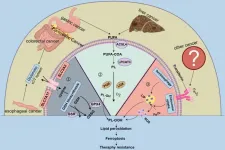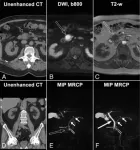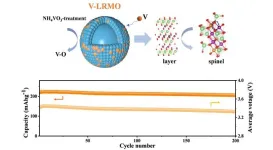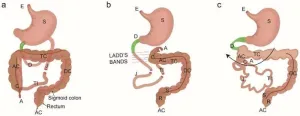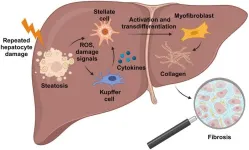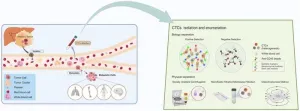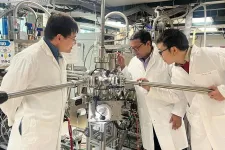The evolution of gastrointestinal (GI) endoscopy has transformed CRC diagnostics since its early 20th-century origins. Initial rigid endoscopes provided limited visualization, were highly uncomfortable for patients, and only partially visualized the colon. With the introduction of fiber-optic technology in the 1950s, endoscopy began transmitting real-time images, greatly enhancing diagnostic applications for GI conditions. Today, CRC remains a primary target for endoscopic screening due to its high prevalence as the second leading cause of cancer mortality in the United States. Despite technological advancements, standard endoscopic practices, including colonoscopies, miss approximately 2.1-5.9% of polyps or cancers, and nearly 30% of removed polyps are incompletely resected, potentially leading to CRC after screening. Furthermore, only 11.4% of biopsies show malignancy, meaning that nearly 88.6% of sampled tissues were healthy, posing unnecessary procedural risks. This review critically examines traditional and cutting-edge endoscopic modalities, comparing their diagnostic accuracy and limitations to guide improvements in CRC diagnosis.
Current Endoscopic Modalities
Endoscopic technology encompasses wide-field and microscopic-field techniques, each with specific strengths and drawbacks for CRC screening. Wide-field modalities—such as WLE, virtual and dye-based chromoendoscopy, ultrathin endoscopy, and capsule endoscopy—enable large-scale visualization of the GI tract.
White Light Endoscopy (WLE)
WLE remains the standard CRC diagnostic approach, using white light to illuminate mucosal structures and provide realistic imaging. Enhanced high-definition (HD) and ultra-high-definition (UHD) WLE technologies enable sharper visualization, especially with close-focus and dual-focus options. These advances increase diagnostic accuracy but still struggle with sensitivity, achieving around 68% accuracy in polyp detection. Attempts to boost sensitivity include panoramic field-of-view (FOV) endoscopes and third-eye retroscopes, which allow for retrograde viewing during forward progression, thus enhancing adenoma detection rates.
Virtual Chromoendoscopy
Virtual chromoendoscopy, utilizing optical filters to target light frequencies, enhances mucosal visualization by interacting with hemoglobin-rich tissues. Common modes include narrow-band imaging (NBI), iScan, and Fujinon intelligent chromoendoscopy (FICE). NBI has particularly promising results, with sensitivity rates between 81.8-99.2%. However, virtual chromoendoscopy techniques require standardization and proper training, as image interpretation can vary between practitioners. The NICE (NBI International Colorectal Endoscopic) classification system attempts to address this, categorizing lesions by color, vascular pattern, and surface features to aid real-time identification of potentially malignant areas.
Dye-Based Chromoendoscopy
Unlike virtual techniques, dye-based chromoendoscopy uses physical dyes like indigo carmine and methylene blue to highlight mucosal structures. Although effective and more affordable than virtual methods, its diagnostic results can vary with the operator's skill in dye application. This method is especially useful in detecting dysplasia in inflammatory bowel disease patients, though it remains secondary for CRC due to time constraints and potential variability in lesion presentation.
Ultrathin and Capsule Endoscopy
Ultrathin endoscopy provides a narrower-diameter alternative, improving patient comfort, reducing pain, and enabling procedures with minimal sedation. While this approach is more commonly applied for upper GI screening, its utility for CRC is under study. Capsule endoscopy, or “pill cameras,” offers a non-invasive method for visualizing the GI tract. Capsule endoscopy has yielded promising results, especially in identifying CRC after incomplete colonoscopy, but lacks active locomotion, limiting visualization accuracy in certain GI segments.
Microscopic-Field View Endoscopy
Microscopic modalities, including confocal laser endomicroscopy, endocytoscopy, and OCT, allow for cellular-level examination without the need for traditional biopsies, offering potential for “optical biopsy.” These modalities are particularly advantageous in distinguishing healthy tissue from malignant tissue in vivo, potentially reducing biopsy rates and procedural costs.
Confocal Laser Endomicroscopy
By producing fluorescence-based images at a micron level, confocal laser endomicroscopy replicates histology-like views of mucosal structures, using fluorescein as a contrast agent. The technology provides a 1–3.5 µm resolution and allows imaging depths up to 70 µm. Although highly accurate, with a sensitivity of 96%, this method’s expense and small field of view can limit its practical application, making it most suitable for specialized centers.
Endocytoscopy and Optical Coherence Tomography (OCT)
Endocytoscopy achieves up to 1000-fold magnification with dyes to highlight nuclear and glandular details, offering 85% sensitivity for detecting CRC. OCT employs low-coherence light, providing a resolution of about 10 µm with a larger scanning area than other microscopic techniques. OCT’s ability to visualize submucosal layers enables in-depth pathology assessments, and advancements in OCT pattern recognition have enhanced its accuracy to near 100% in experimental settings. These technologies, though innovative, demand further research for clinical integration due to their high costs and learning curve.
Artificial Intelligence and Machine Learning in Endoscopy
AI and machine learning have introduced transformative capabilities in endoscopy, particularly for automated polyp detection (CADe) and polyp histology prediction (CADx). Machine learning tools, using real-time convolutional neural networks, enhance polyp detection rates significantly. For instance, one study found that AI-assisted colonoscopy improved the adenoma detection rate (ADR) by nearly 10% compared to standard WLE. However, AI’s effectiveness can vary based on the clinical setting, with some studies showing no significant ADR increase in non-specialized centers. AI’s integration into clinical practice requires robust training frameworks to maximize its diagnostic potential and to ensure reliability across various operator skill levels.
Robotic Colonoscopy
Robotic colonoscopy represents a further step toward procedural precision and patient comfort. Modern systems, including self-propelling, self-steering robotic endoscopes, address challenges like looping and operator fatigue. Initial robotic systems struggled with complexity and high costs, but newer models like the FDA-approved Endotics System show promise with reduced patient discomfort and comparable ADRs to traditional endoscopy. Although still limited in clinical availability, robotic colonoscopy’s potential to improve endoscopy outcomes and comfort may drive future adoption alongside traditional methods.
Conclusions
The field of endoscopy continues to advance with innovative imaging technologies and AI-driven solutions aimed at improving CRC detection and diagnosis. Emerging microscopic modalities and optical biopsies allow for cellular-level examination, reducing the need for invasive biopsies. Despite these advancements, challenges such as training requirements, standardization, and cost remain. Further research and continued development of AI tools and robotic systems may bridge these gaps, improving the accessibility and accuracy of CRC diagnosis. As endoscopy evolves, these innovations hold promise for enhancing patient outcomes and lowering CRC mortality rates.
Full text
https://www.xiahepublishing.com/2994-8754/JTG-2024-00011
The study was recently published in the Journal of Translational Gastroenterology.
Journal of Translational Gastroenterology (JTG) dedicates to improving clinical diagnosis and treatment, advancing understanding of the molecular mechanisms, and promoting translation from bench to bedside of gastrointestinal, hepatobiliary, and pancreatic diseases. The aim of JTG is to provide a forum for the exchange of ideas and concepts on basic, translational, and clinical aspects of gastroenterology, and promote cross-disciplinary research and collaboration.
Follow us on X: @xiahepublishing
Follow us on LinkedIn: Xia & He Publishing Inc.
END


